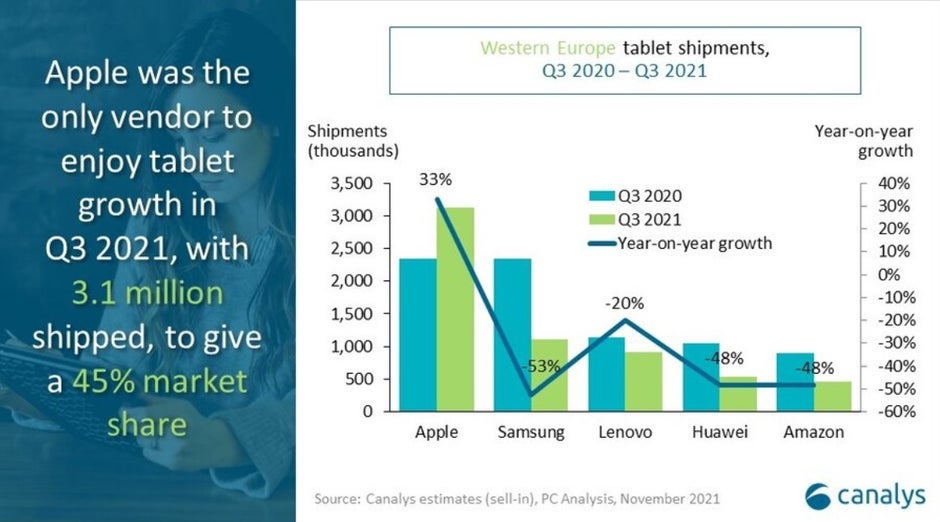Western Europe tablet shipments dropped 20% on an annual basis during the third quarter
In other words, last year with many people working from home and children homeschooling, demand for PCs was so strong that they became hard to find. Many decided to purchase a tablet instead. With such a device, men and women could work from home during the day and stream movies and music during the night.
The kids could use their tablets to view live feeds of their lessons presented by their teachers, do homework in the early afternoon, and watch videos and listen to music during the evening. And both the adults and the kids could find a tablet that uses an operating system that they are very familiar with be it iOS or Android. Despite the sharp decline for the industry during Q3 in Western Europe, there was one standout performer: the iPad.
Huawei was fourth as it shipped slightly more than 500,000 tablets during the three months while Amazon delivered approximately half a million units. If you are studying the numbers, you’ll see that of the top five companies shipping tablets to Western Europe, during the third quarter only Apple and the iPad experienced any year-over-year growth.
The global chip shortage might make it tough for Apple to continue to show growth in iPad shipments in the region
With the new Omicron COVID variant getting consumers and leaders concerned about the virus again, Western Europe is a vulnerable region, and while that could help increase the demand for tablets, it could also lead to a decline in the availability of product. Canalys’ Pham notes, “Despite being early to rollout vaccines, certain countries in Western Europe have lagged behind in terms of vaccination rates.”


